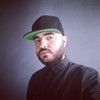The Art of Lighting in Cinema
In the world of cinema, lighting is more than just a way to see the actors. It is a powerful tool that can be used to create atmosphere, set the mood, and influence the audience's emotional response.


The Importance of Lighting
Lighting is not just about making sure the actors are visible. It is also about creating a visual style that reflects the story being told. For example, a romantic comedy might use soft, diffused lighting to create a warm and inviting atmosphere, while a thriller might use harsh, high-contrast lighting to create a sense of suspense.
Different Lighting Techniques
There are many different lighting techniques that can be used to create different moods and tones. Some common techniques include:
- High-key lighting: This type of lighting creates a bright and airy atmosphere. It is often used in comedies and other light-hearted films.
- Low-key lighting: This type of lighting creates a dark and moody atmosphere. It is often used in dramas, thrillers, and horror films.
- Rembrandt lighting: This type of lighting creates a dramatic effect by casting a triangle of light on the subject's cheek. It is often used in period films and other films that require a classic look.
- Silhouette lighting: This type of lighting obscures the subject's face, creating a mysterious and suspenseful atmosphere. It is often used in action films and other films that require a sense of danger.
Illuminate your storytelling with precision!
Use Filmustage to streamline lighting plans, enhance mood, and bring your cinematic vision to life.
Color Temperature
In addition to the intensity of the light, the color temperature of the light can also be used to create different moods and tones. Warm colors, such as reds and oranges, can create a cozy and inviting atmosphere, while cool colors, such as blues and greens, can create a more somber and reflective atmosphere.
The Importance of Collaboration
The use of lighting in a film is a collaborative effort between the director, cinematographer, and production designer. The director must communicate their vision for the film to the cinematographer, who will then use their expertise to create the desired lighting effects. The production designer also plays a role in the lighting process, as they will need to choose sets and costumes that complement the lighting style.
Case Studies
Here are a few examples of how lighting has been used to create different moods and tones in films:
"Blade Runner" (1982)
This neo-noir science fiction film uses low-key lighting and cool color temperatures to create a dark and dystopian atmosphere. The film's director, Ridley Scott, wanted to create a world that was both glamorous and gritty, and he used lighting to achieve this effect. The film's cinematographer, Jordan Cronenweth, used a variety of techniques to create the film's distinctive look, including low-key lighting, which uses a lot of shadows, and cool color temperatures, which use more blue and green tones. These techniques combined to create a world that was both visually stunning and unsettling.

"Schindler's List" (1993)
This historical drama uses high-contrast lighting and stark shadows to create a powerful and emotional film about the Holocaust. The film's director, Steven Spielberg, wanted to create a film that would be both visually and emotionally powerful, and he used lighting to achieve this effect. The film's cinematographer, Janusz Kaminski, used a variety of techniques to create the film's distinctive look, including high-contrast lighting, which uses a lot of contrast between light and dark, and stark shadows, which are long and sharp. These techniques combined to create a film that was both visually stunning and emotionally harrowing.

"In the Mood for Love" (2000)
This romantic drama uses soft lighting and warm color temperatures to create a nostalgic and intimate atmosphere. The film's director, Wong Kar-Wai, wanted to create a film that would evoke a sense of nostalgia and longing, and he used lighting to achieve this effect. The film's cinematographer, Christopher Doyle, used a variety of techniques to create the film's distinctive look, including soft lighting, which uses a lot of diffusion, and warm color temperatures, which use more red and orange tones. These techniques combined to create a film that was both visually stunning and emotionally resonant.

These are just a few examples of how lighting can be used to create different moods and tones in films. By understanding the different lighting techniques available, filmmakers can create films that are visually stunning and emotionally engaging.
Conclusion
Lighting is a powerful tool that can be used to create a variety of moods and tones in a film. By understanding the different lighting techniques and color temperatures available, filmmakers can create films that are visually stunning and emotionally engaging.
Crafting mood and tone through lighting is an essential skill that every filmmaker needs to master. It's a subtle art that can dramatically shape the storytelling process, setting the emotional landscape of each scene.
Software tools like Filmustage can play a crucial role in mastering these techniques. Its AI-driven script breakdown feature can assist in envisioning lighting needs for each scene, enhancing the pre-production planning process. Moreover, Filmustage's reference search feature is a valuable tool for finding visual references related to specific script elements, allowing filmmakers to study the lighting styles used in other films and use them as inspiration for their own.
Mastering the intricate dance of shadows and light is a fascinating journey. And with the right tools, you can paint vibrant emotions with light, bringing your cinematic vision to life. Explore the world of lighting techniques with Filmustage today and illuminate your storytelling.
From Breakdown to Budget in Clicks
Save time, cut costs, and let Filmustage’s AI handle the heavy lifting — all in a single day.